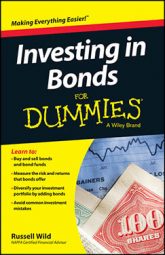The transaction costs incurred when investing in individual bonds, which have traditionally been way higher than stock transaction costs, have been dropping faster than hail.
One 2004 study from the Securities and Exchange Commission found that the average cost of a $5,000 corporate bond trade back then was $84, or 1.68 percent — equivalent to several months' interest. Smaller trades (less than $5,000) tended to whack investors with much higher costs.
Trade costs of municipal bonds (a favorite flavor of bond among individuals in high tax brackets), according to the same study, averaged 2.23 percent — equivalent perhaps to a full year's return after inflation — for trades of $25,000 or less. For trades from $25,000 to $100,000, the average price spread was 1.12 percent.
Since 2004, the cost of bond trading has dropped considerably and continues to do so. A savvy bond investor can now buy a typical corporate or municipal bond with half to a third of the trading cost she would have incurred in 2004. But, of course, interest rates are awfully low today. So paying even a markup of half a percent could represent several months of interest.
Bond sales, as opposed to buys, can still be a tougher and more expensive game. That's one reason that buying single bonds is recommended only if you plan to hold them until maturity (or until they are called).
The changing environment, which has thrown many bond brokers out of business, is due in part to the advent of Internet trading but more so to something called the Trade Reporting and Compliance Engine (TRACE), a government and securities industry–imposed national database that allows bond traders — both professional and amateur — to see what other bond traders are up to. Brokers can no longer charge whatever markup they wish.

